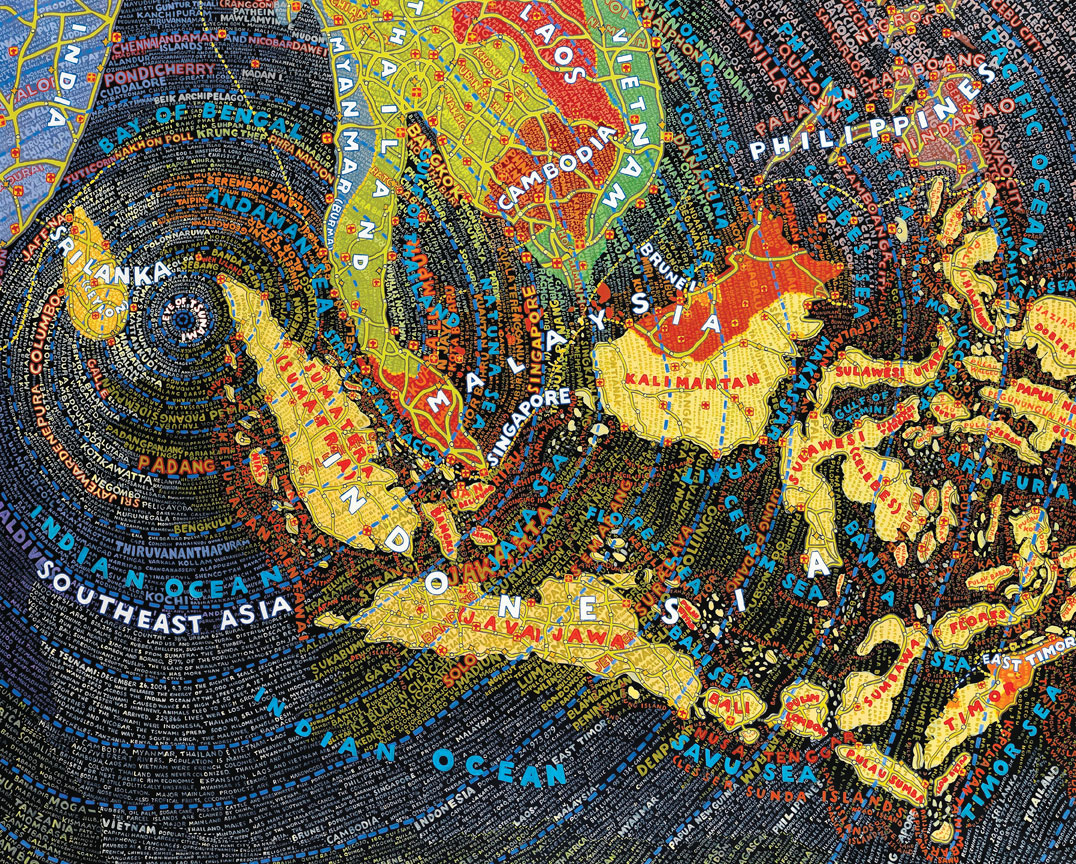
This is an artwork from Boris Tellegen. He's my
favorite artist and I have known him since the high
school. His works often catch my attention as I
love the contrast between the complexity and negative
space, which creates a great intensity. He often uses
multimedia of paper, wood and colors to make artworks.
As in this piece, I can see the traces of pencil marks
and the spreading color of spray paintings and the cutting
out shapes of white areas. Especially the feature of over
layering papers that creates dimensionality to the work,
which I can see the chaos in the order; vice versa. This
is not a typical graphic design, but I like the most.
This is an artwork from a famous Japanese designer
Takashi Kono. He's famous for his artwork "fish".
I really like this work that how he has used really
light soft colors to create a strong impression in
my mind. And how he uses simple shapes and stacks
them together in a image. It looks abstract, but
also connected. His work looks like the combination
of traditional Japanese art with the constructivism
from the western art. Even though it's an abstract
picture, I imagined as 3 flowers in a vase that
stands on the table. It's very pleasing.
This is an artwork form Paula Scher, who's a really
famous graphic designer. I had once seen her videos
and got inspired form her works. This is a map she
drew with paints. And every shape and area are
presented by letters and words. There are more maps
she has created like this for different parts of
world and countries. I chose this one because I
like the contrast of between the colors that there
are some very bright ones and some dark ones. This
work let me sees the possibility of how words and
typography can be transformed into arts and how they
made our world. I think it's both creative and literal
that when we are seeking for a place, we would look
for the street name, and this map is totally created
by the names. However, she has said that she put all
the names down by instinct and feelings, which by
looking in the detail, some information is wrong,
which delivers the idea of lies under the surface
that we often receive the wrong information.